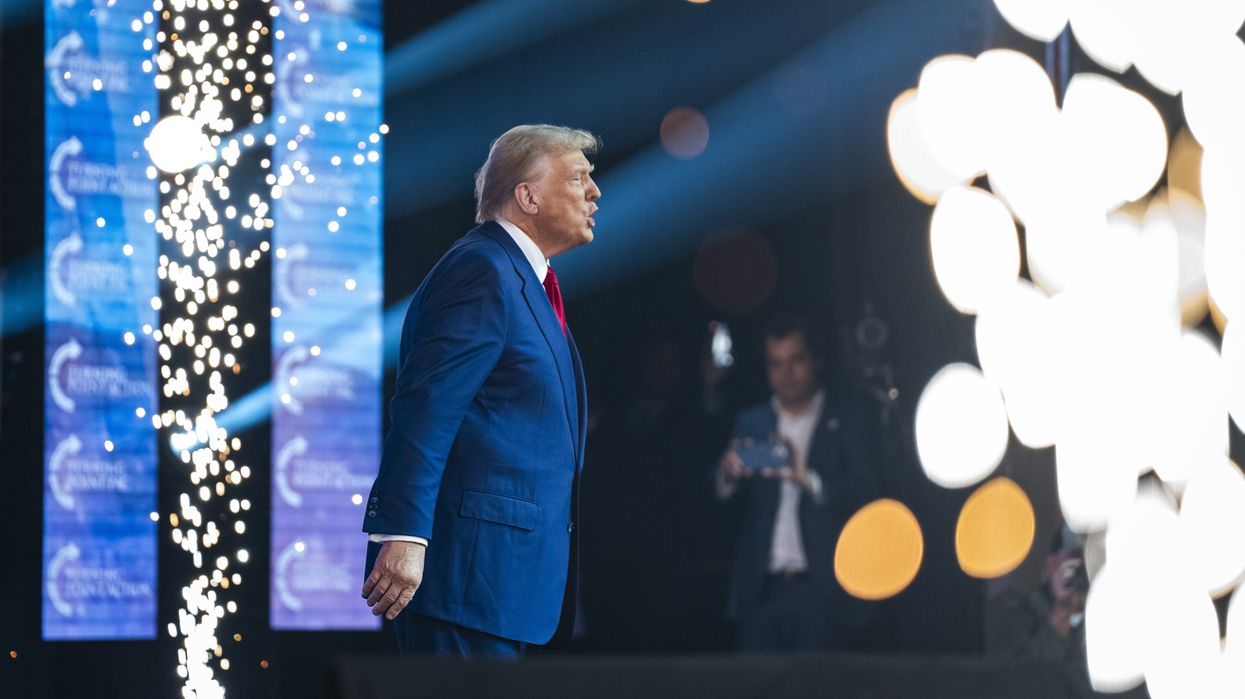Rikleen is executive director of Lawyers Defending American Democracy and the editor of “ Her Honor – Stories of Challenge and Triumph from Women Judges.”
As we near the end of a tumultuous election season, too many traditional media outlets are inexplicably continuing their practice of covering candidates who meet standards of normalcy differently than the candidate who has long defied them.
By claiming to take the high road of neutrality in their reporting, these major outlets are committing grave harm. First, they are failing to address what is in plain sight. Second, through those continued omissions, the media has abdicated its primary responsibility of contributing to an informed electorate.
The New York Times, for example, has been wandering the campaign wasteland as though its historic influence can override its present abdication of fairness and objective logic. Its coverage of Joe Biden’s age as a major re-election issue went on for years, including the 2022 headline “ At 79, Biden Is Testing the Boundaries of Age and the Presidency,” rich in irony in light of Donald Trump’s age. The relentless scrutiny of Biden’s age continued with sharp coverage of any lapse or stumble and reached a fever pitch following Biden’s poor debate performance in June. The so-called paper of record continued its focus on whether Biden was mentally fit to be president until he withdrew from the race.
In the past months, a different dynamic has been taking place as Trump has demonstrated difficulties articulating coherent thoughts, canceled interviews, failed to directly answer questions in those interviews he has done, increased his threats against opponents, amplified violent rhetoric and sharply intensified his use of profanity. These are behaviors that should cause any legitimate journalist to raise significant questions about the state of his mental health, now mere weeks before the election. Instead, sanitizing has been the order of the day.
At a weekend rally in Pennsylvania, the former president opened his remarks by spending approximately 10 minutes discussing golf legend Arnold Palmer and his penis size, and proceeded to then excoriate the current administration with profanity. The New York Times referenced Trump’s descent into a new level of “vulgarity” with the sub-headline: “ The G.O.P. nominee repeated crude insults, and his supporters relished each moment. ”
The article did not raise questions about whether the former president’s lewd comments addressing another man’s penis size in front of a family audience might have been a sign of declining mental health or possible dementia. Rather, it mused about whether the behavior was either an “expression of his frustration” or his “reflexive desire to entertain his crowds,” and then noted that it set “a curious tone.” Now imagine what the media reaction would be if any other public figure opened a speech with similar comments.
The Hill is a publication that describes itself as reporting on the “intersection of politics and business,” offering “objective and in-depth coverage” that is read by opinion leaders, including in government and the corporate sector. But it is difficult to square that descriptor with its own headlines.
The Hill’s article on Trump’s Arnold Palmer comments began with a headline stating that his “ribald remarks” drew “scrutiny.” Dictionary examples of the word “ribald” are associated with humor and “racy innuendo.” In the context of a campaign rally, this headline is a textbook exemplar of sane-washing. In an interview with the Independent, the golfer’s daughter, in measured understatement, referred to the comments as “an unfortunate way to remember” her dad.
Other Hill headlines from the same day noted that Vice President Kamala Harris has stepped up negative attacks and that she was making a “ last-ditch appeal to disenchanted Republicans.” Both articles described campaign tactics in a vacuum that would be unimaginable in the coverage of past presidential campaigns. As with so many of The Hill’s headlines this election season, the campaign coverage normalizes one party’s irrational behavior while scrutinizing the other’s actions.
And after a week of revelations from retired Gen. John Kelly, who served as Trump's chief of staff, about the former president's fascist tendencies and praise of Hitler, The Hill headlines on Friday touted that Trump’s campaign exudes confidence as it enters the homestretch. It’s the same day the headline for a Harris story highlighted that she sees troubling signs in the latest New York Times/Sienna poll. The referenced poll showed the candidates deadlocked, and the articles did not quote any campaign sources, anonymously or otherwise, to indicate that she was troubled by it.
These examples are only the latest in coverage that has long normalized the former president’s behaviors and abandoned objective standards. But asking questions and insisting that statements threatening the norms and principles of democracy and the rule of law must be reported differently than positions on taxes and tariffs does not demonstrate bias or partisanship.
Journalists have an ethical obligation to accurately and impartially report the truth. Instead, by sanitizing a candidate’s abnormal words and actions, traditional media outlets have created their own biased coverage.
The public not only deserves better — it needs the media to meet this moment and engage in the fight for truth and the accurate reporting of actual facts. Doing so is not partisan engagement; it is the highest calling for journalists.




















